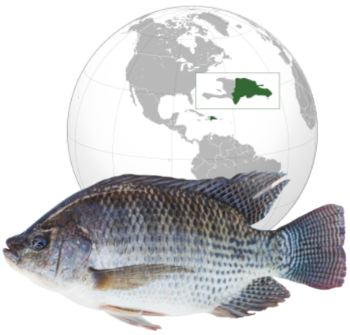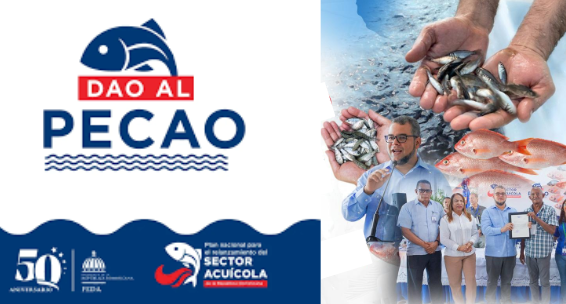|

Photo: Stockfile/FIS
Booming Tilapia Industry Drives Aquaculture and Food Security
 DOMINICAN REPUBLIC
DOMINICAN REPUBLIC
Wednesday, December 11, 2024, 00:00 (GMT + 9)
For decades, aquaculture in the Dominican Republic faced significant challenges, particularly in tilapia farming, as consumers rejected the fish due to its "earthy" taste.
%20Republica%20Dominicana%20FIS%20Seafood%20Media(1).png)
The landscape has changed dramatically in recent years. From just 20 or 30 aquaculturists persevering out of passion, the country now has around 3,000 producers cultivating not only tilapia but also shrimp, sea bass, and grouper.
By 2024, a record production of 3,743 tons of tilapia is projected, reflecting a 48.7% increase compared to 2020. This growth is linked to government support for family, community, and institutional fish farming projects. According to economist Hecmilio Galván, director of the Special Fund for Agricultural Development (FEDA), this "boom" not only improves the country's food security but also increases human development in vulnerable communities.
The FEDA's Role in Boosting Aquaculture
The FEDA has invested over RD$40 million in initiatives to strengthen aquaculture. Since 2023, it has distributed 3.1 million fingerlings to 327 fish farmers and trained 4,636 people in modern tilapia production techniques. This effort, described as the most significant in the history of the sector, has been backed by financing, technical assistance, and the creation of associative projects aimed at improving the industrialization and commercialization of tilapia.

Additionally, with the "Dao al pecao" campaign, the FEDA aims to increase production by 2,450 tons annually and reduce the 70% dependence on imports of fish and seafood, which cost RD$14,650 million in 2023.
Notable Projects
- Dominican Air Force: Construction of six ponds with an investment of RD$3.6 million and the delivery of 30,000 fingerlings.
- COOPMOSCÚ (San Cristóbal): Financing of RD$1.5 million for tilapia production.
- ASOMUNE (Yamasá): Loan of RD$2.2 million for a fish farm.
- Cooperativa El Cascajal (San Rafael del Yuma): RD$1.5 million for the acquisition of ponds with a capacity for 4,000 fingerlings each

Sustainable Growth and Local Consumption
Although tilapia has not yet replaced pork and chicken in traditional dinners, its presence in Dominican gastronomy has grown significantly in the last 18 months. This change is due to the focus on producing high-quality, low-cost tilapia, adapting to the local and international market. According to Galván, the expansion of Dominican aquaculture is key to diversifying the national diet, increasing food self-sufficiency, and reducing costs in fish imports.
This progress positions the Dominican Republic on a promising path towards sustainable and profitable aquaculture development, with tilapia as the driving force behind the change.
[email protected]
www.seafood.media
|



